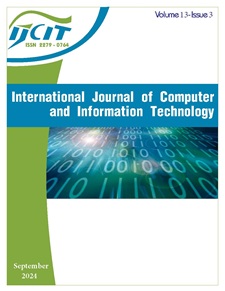Visualization of Prediction of The Spread of Covid-19 in Indonesia using Cellular Automata
DOI:
https://doi.org/10.24203/htdzgq15Keywords:
cellular automata, covid-19, moore, virusAbstract
The first case of COVID 19 was detected in Indonesia in early March 2020. One way to assist the government in making decisions to deal with COVID-19 is to create a map of the distribution of COVID-19 patients based on which can only be accessed by people who have an interest through the website. The data used in this study is the period, location, total cases. After getting the data, the data is then processed to get weekly rules. After getting the weekly rules, the data is entered into the calculation of the Moore scheme to get the prediction results for the next week. Then the prediction results are poured in the form of a map. The prediction process using CA neighbors is carried out using Moore's formula, a formula that applies the adjacent neighbors of 8 neighbors. The accuracy level of Cellular Automata with Moore's neighbors reaches 431.1466353% using MAPE. The error value in the Cellular Automata method is quite high due to several factors that make the prediction results with the original data results different, but this method can be used to research cases of covid 19References
KEMENKES, “Hindari Lansia dari Covid-19,” Kementerian Kesehatan Republik Indonesia, 2020. http://www.padk.kemkes.go.id/article/read/2020/04/23/21/hindari-lansia-dari-covid-19.html (accessed Oct. 23, 2020).
S. Fadjarajani, “Peranan Geografi dalam Analisis Sebaran Covid-19,” Pros. Semin. Nas. Hardiknas 1, vol. 1, pp. 71–78, 2020.
D. M. U. Atmaja, A. R. Hakim, D. Haryadi, and N. Suwaryo, “Penerapan Algoritma K-Nearest Neighbor untuk Prediksi Pengelompokkan Tingkat Risiko Penyebaran Covid-19 Jawa Barat,” SNTEM, vol. 1, no. November, pp. 1218–1226, 2021, doi: 10.53026/sntem.v1i2.591.
L. Muslimah and D. Pratiwi, “Outspread Pattern Simulation System Of Septicaemia Epizootica Disease Using Cellullar Automata Method In Nusa Tenggara Timur,” Int. J. Technol. Bus. Accord., vol. 2, no. 2, pp. 127–138, 2018.
O. Hasan, S. Sentinuwo, and A. Sambul, “Pemodelan dan Simulasi Penyebaran Penyakit Demam Berdarah Dengue (DBD) dengan Menggunakan Model Cellular Automata,” J. Tek. Inform., vol. 10, no. 1, 2017, doi: 10.35793/jti.10.1.2017.15636.
N. A. Pratomoatmojo, “Permodelan Perubahan Penggunaan Lahan Berbasis Cellular Automata dan Sistem Informasi Geografis dengan Menggunakan LanduseSim,” J. Penataan Ruang, vol. 13, no. 1, p. 26, 2018, doi: 10.12962/j2716179x.v13i1.7064.
A. Shalihah, F. T. Elektro, U. Telkom, and M. Matematika, “Pemodelan Dan Simulasi Penyebaran Penyakit Demam Berdarah Dengue ( Dbd ) Di Kota Bandung Menggunakan Cellular Automata Modeling and Simulation of Spread Dengue Fever Disease ( Dhf ),” e-Proceeding Eng., vol. 5, no. 3, pp. 6259–6266, 2018.
E. Nurhidayati, I. Buchori, and M. Mussadun, “Cellular Automata Modeling in the Built Up Areas Within Urban Development At Pontianak, West Borneo, Indonesia,” Geoplanning J. Geomatics Plan., vol. 4, no. 2, p. 201, 2017, doi: 10.14710/geoplanning.4.2.201-212.
A. Kumar, R. Agrawal, and C. Chattopadhyay, “Weather based forecast models for diseases in mustard crop,” Mausam, vol. 64, no. 4, pp. 663–670, 2013, doi: 10.54302/MAUSAM.V64I4.749.
F. Hanafi, D. P. Rahmadewi, and F. Setiawan, “Land Cover Changes Based on Cellular Automata for Land Surface Temperature in Semarang Regency,” Geosfera Indones., vol. 6, no. 3, p. 301, 2021, doi: 10.19184/geosi.v6i3.23471.
Downloads
Published
Issue
Section
License
Copyright (c) 2024 Safira Aurellia Azzahra, Dian Pratiwi, Syandra Sari

This work is licensed under a Creative Commons Attribution-NonCommercial 4.0 International License.
The articles published in International Journal of Computer and Information Technology (IJCIT) is licensed under a Creative Commons Attribution-NonCommercial 4.0 International License.


